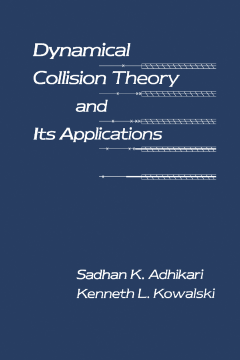
Additional Information
Book Details
Abstract
Dynamical Collision Theory and Its Applications reviews some of the powerful methods that have evolved for calculating the predictions of dynamical collision theory. Topics range from scattering theory to potential scattering, three- and four-particle scattering, multiparticle scattering, many-particle Lippmann-Schwinger equations, and the connected-kernel approach.
This book is comprised of nine chapters; the first of which introduces the reader to the quantum theory of scattering. This topic is followed by a discussion on two-particle potential scattering and various methods for calculating off-shell two-body amplitudes as well as approximating them by finite-rank forms. The next chapters focus on the interpretation and applicability of the multichannel, multiparticle Lippmann-Schwinger equations, along with the known N-particle connected-kernel integral equations and their physical predictions. Descriptions of contemporary field-theoretical and relativistic approaches, such as the Dirac phenomenology for intermediate energy nucleon-nucleus scattering, are included. The singularity structure of multiparticle amplitudes and the associated dispersion-relation techniques are also considered. This book concludes by describing the relationship between the conventional (optical potentials, multiple-scattering theories, and the coupled-reaction channel and resonating-group methods) and the few-body approaches.
This text is primarily intended for chemists, physicists, and graduate students interested in general scattering theory; intermediate and low-energy hadron and nuclear physics; atomic and molecular physics; statistical mechanics; and physical and quantum chemistry. There are a number of topics in this book that will be interesting to both mathematicians and particle physicists, as well as advanced graduate students in courses that involve collision theory.
